E0102-VR
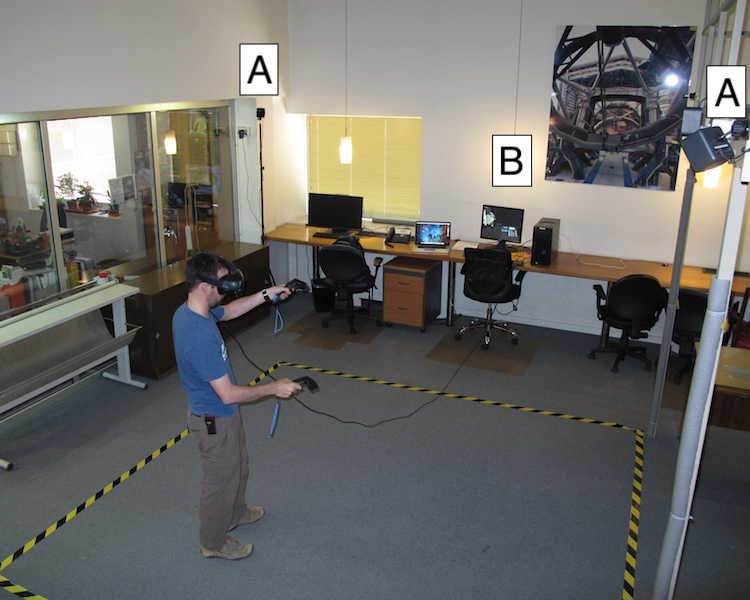
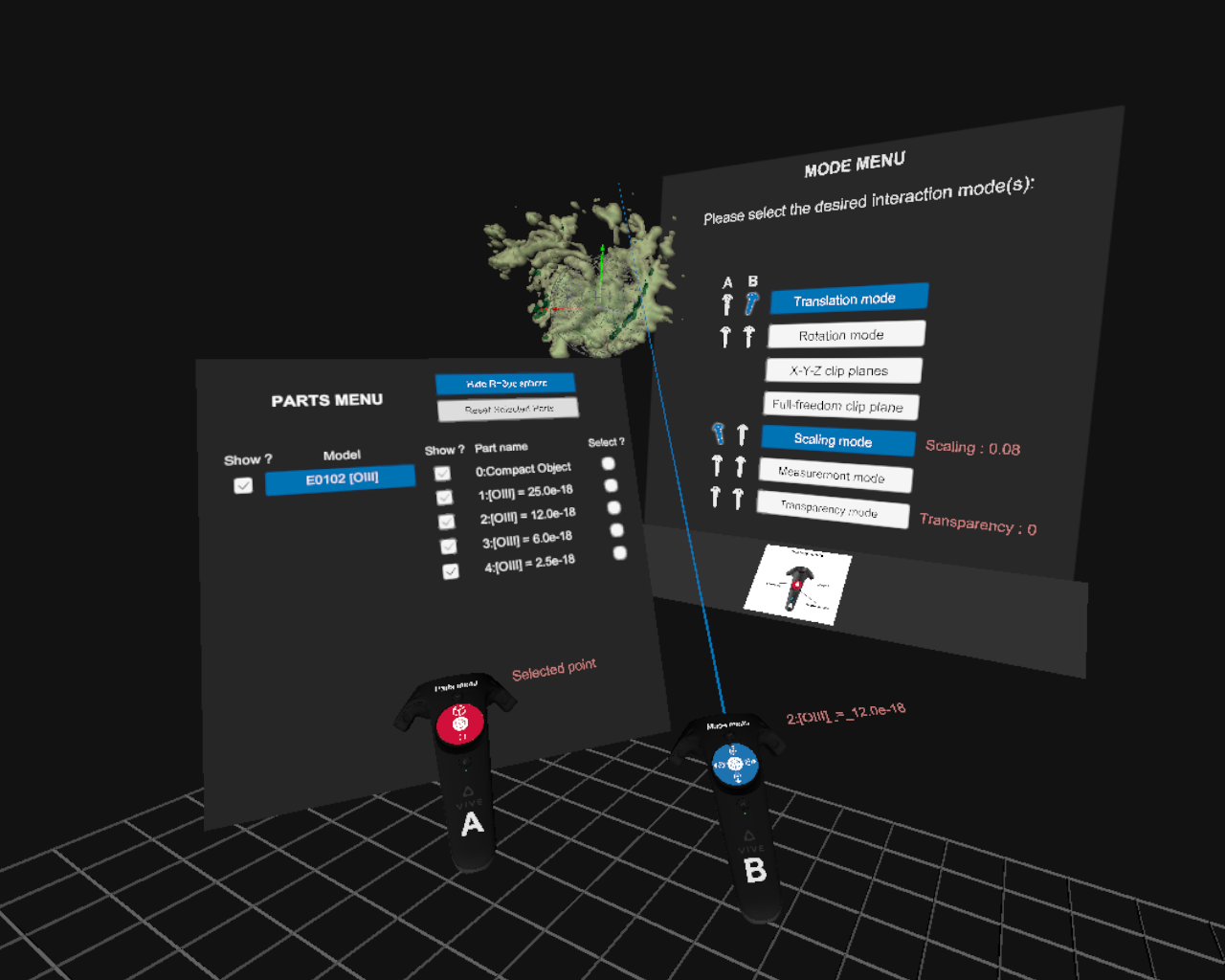
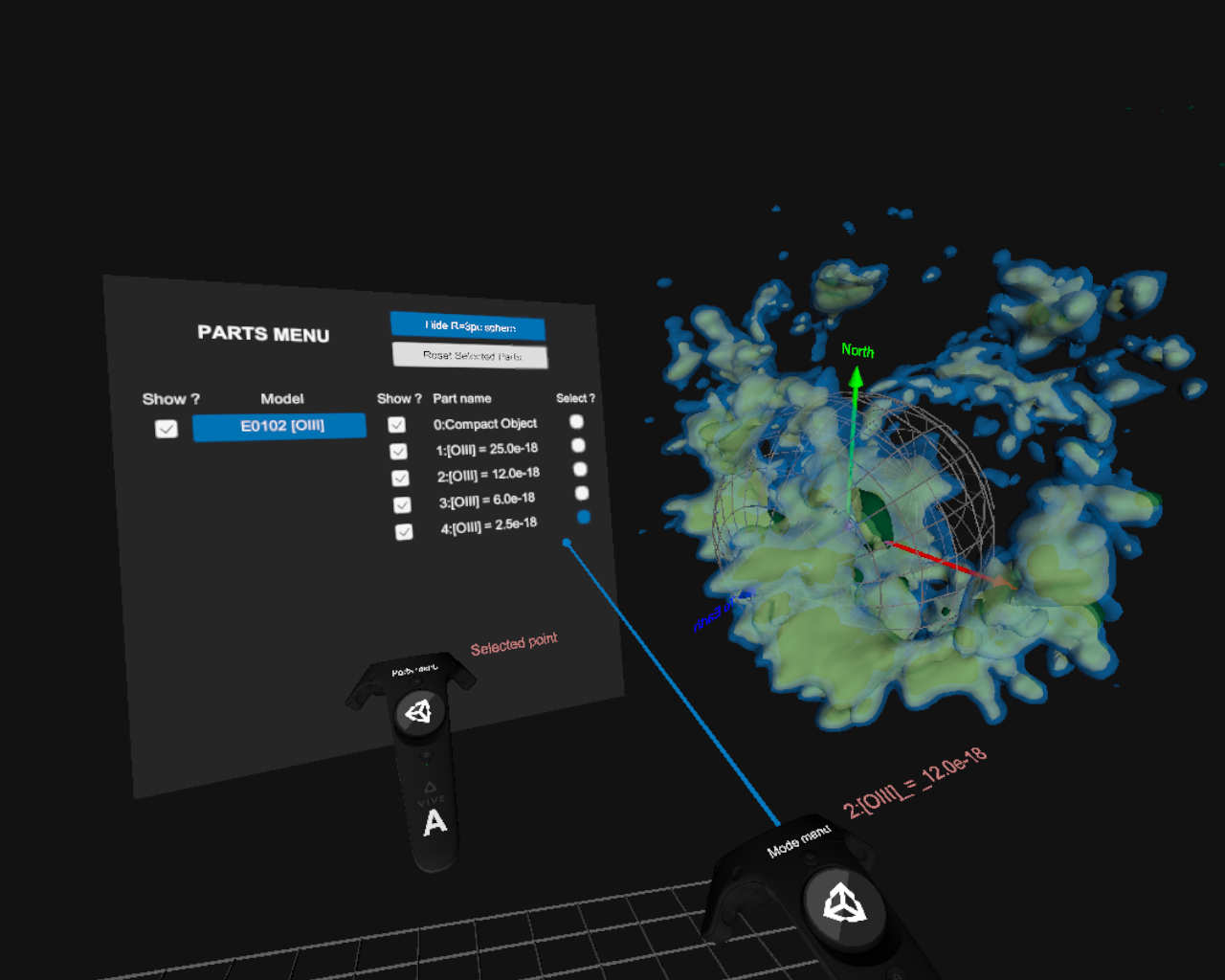
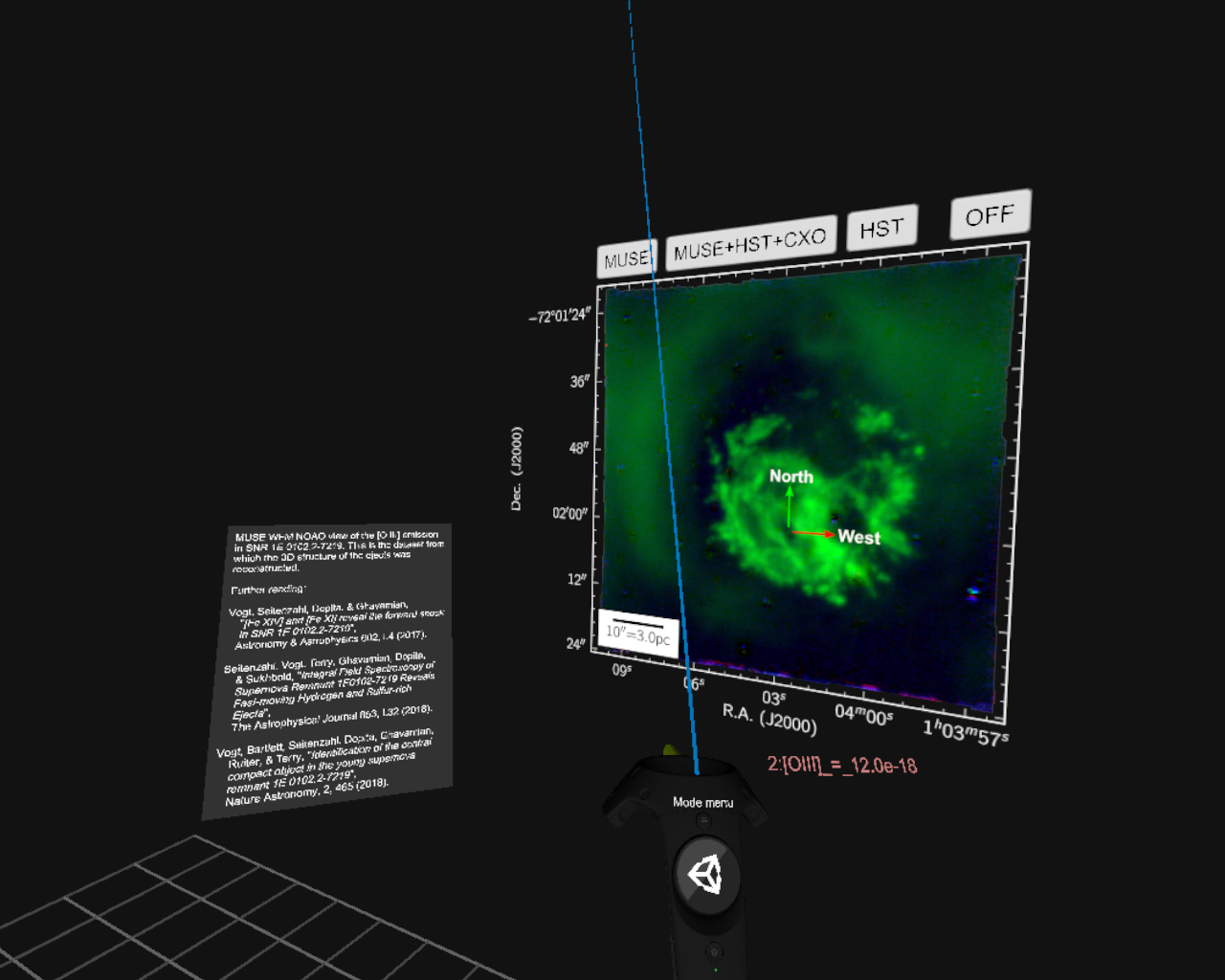
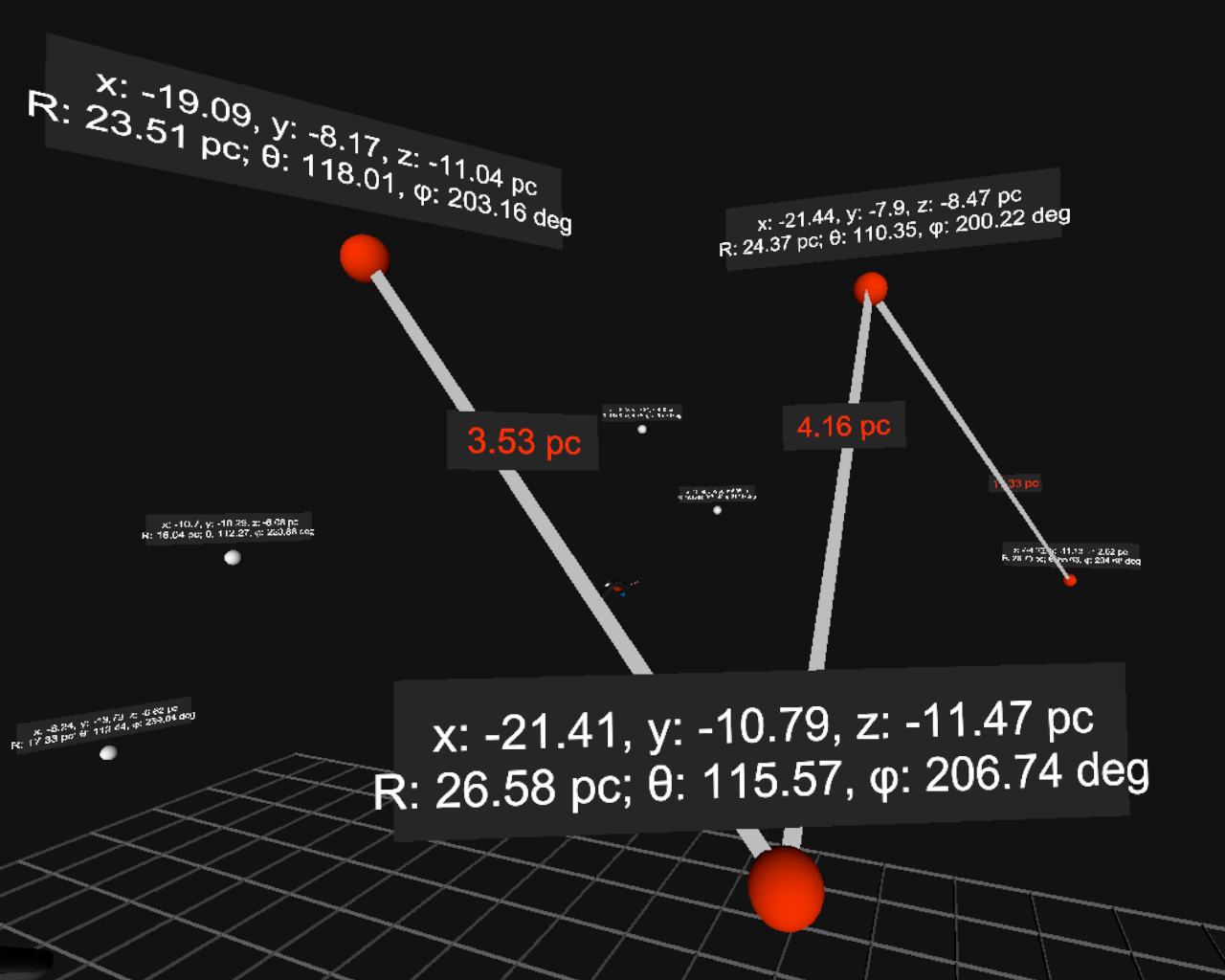

Reference:
Baracaglia & Vogt, E0102-VR: exploring the scientific potential of Virtual Reality for observational astrophysics, Astronomy & Computing (2019).
ASCL: 1910.013; DOI: 10.5281/zenodo.3523259
Welcome!
This website is dedicated to the Virtual Reality (VR)
application "E0102-VR" (Download it here!). This application was developed between June and September 2018 at
the Chilean headquarters of the European Southern Observatory (ESO) in Santiago. It is
designed to explore the scientific potential of VR for the visualization and
characterization of observational datasets in astrophysics. Here's a quick video showing
what the app looks like from the inside:
The specific scientific goal of E0102-VR is to help characterize the complex 3D structure of
the oxygen-bright ejecta in the supernova remnant 1E 0102.2-7219, located in the Small
Magellanic Cloud. These ejecta correspond to the outer-layers of a massive star that exploded
in a core-collapse supernova ~2050 years ago. During this event, the outer-layers of the
progenitor star were expelled into space at a few 1000 km/s, giving rise to the complex
filamentary structure we see today in this system (see Fig. 1).

Fig.1: The oxygen-bright filaments (in blue) of the supernova remnant 1E 0102.2-7219 in the Small Magellanic Cloud, seen by the
Hubble Space Telescope. Credit: NASA, ESA and the Hubble Heritage Team (STScI/AURA).
One key aspect of these ejecta is that they have been roughly moving ballistically (that is,
with a constant speed) since the supernova explosion. Hence, the radial velocity of each
ejecta knot can be translated into a physical depth. By measuring the radial
velocity of all the knots in the system with the
MUSE integral
field spectrograph at the Very Large Telescope (see Fig. 2), we assembled the 3D map of the
ejecta: the real 3D distribution of the star chunks that we see today!
The E0102-VR application offers the user a complete immersion inside the 3D structure.
Besides generic interaction tools that include translation, rotation, scaling and
transparency adjustments, E0102-VR includes:
a) 2 clip plane modes to slice the model along different directions, and,
b) a measurement mode, to extract actual angles and distances from the structure.
E0102-VR requires the use of an HTC Vive. The 3D structure of the ejecta, however, can also
be explored using the interactive plot below.
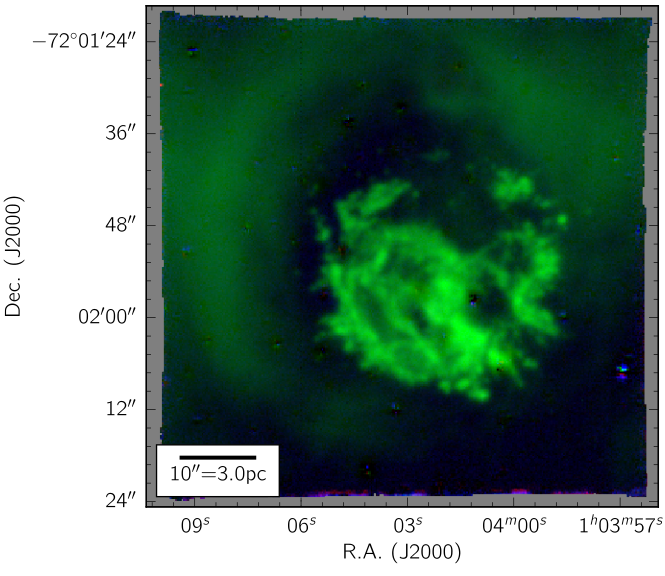
Fig.2: The oxygen-bright filaments of the supernova remnant 1E 0102.2-7219, seen by
MUSE. The radial velocity of the oxygen-emitting knots can be measured for each pixel in
this image.
The interactive 3D map of the ejecta:
This interactive version of the 3D map relies on the X3DOM (pronounced "X-Freedom")
framework for its integration within HTML documents. Dedicated interaction buttons allow
to select pre-set views of the model, add clip planes, take screenshots, toggle the
reference sphere on or off, and "peel" the intensity layers of the oxygen-bright ejecta.
For each clip plane, the value \(\Delta d\) indicates in pc the distance between the
given clip plane and the model center (set as the location of the Central Compact Object,
anchored to the rest frame of the SMC for depth), visible as a purple sphere.
One sphere of 3 pc in radius is included as a scale references. The blue arrow points
towards the Earth (located 62 kpc away), the green arrow points North, and the red arrow
points West.
The central gap in the model (0.4 pc thick) corresponds to the rest-frame spectral range of [OIII]
in the SMC. This area is contaminated by background oxygen emission that fills the
full spatial extent of the datacube, and which was cropped off from this 3D map for clarity
purposes.
Typical loading time (dependent on connectivity speed): 5-30s.
Screenshot:
→
Outer flux density level: 2.5 \( \times10^{-18} \text{ erg s}^{-1} \text{ cm}^{-2}\ \AA^{-1}\)
Reference spheres:
Viewpoints:
Further reading:
Vogt, Bartlett, Seitenzahl, Dopita, Ghavamian, Ruiter, & Terry,
Identification of the Central Compact Object in the young supernova remnant 1E0102.2-7219,
Nature Astronomy 2, 465 (2018).
Seitenzahl, Vogt, Terry, Ghavamian, Dopita, Ruiter, & Sukhbold,
Integral Field Spectroscopy of Supernova Remnant 1E0102-7219 Reveals Fast-moving Hydrogen
and Sulfur-rich Ejecta, The Astrophysical Journal Letters, 853, L32 (2018).
Vogt, Seitenzahl, Dopita, & Ghavamian,
[Fe XIV] and [Fe XI] reveal the forward shock in SNR 1E0102.2-7219, Astronomy & Astrophysics, 602, L4 (2017).